Revision rhinoplasty is an operation aimed at correcting an unsuccessful result after plastic surgery has been performed to correct the nose. Rhinoplasty review is the only way out for patients who, after rhinoplasty, have a significant visible defect in the outer nose or deterioration of its function. So, sometimes after rhinoplasty, patients notice undue differences in their nasal wings or significant asymmetry. Sometimes a bumpy nose turns into a "saddle" nose - with the back of the nose too low, because the surgeon is removing too much bone or cartilage tissue.
It also happens that the cause of patient dissatisfaction may be associated not with the surgical technique, but with the individual characteristics of the organism. For example, after healing, the scars on the columella become large and noticeable. The nasal septum appears more convex and lengthens the nose visually because of a tendency for unpredictable scar tissue growth, or as a result of surgery not performed properly. Revised rhinoplasty allows you to solve such problems and restore the correct natural shape of the nose, restore nasal respiratory function, and restore the patient’s self -confidence and attractiveness.
Secondary rhinoplasty - approaches and methods
As a rule, patients who apply for secondary rhinoplasty are disappointed, careful people who have less faith in the results of a successful second operation. During the consultation, we tried to gather a thorough medical history, review the pictures before rhinoplasty, to understand the manipulations performed and about the structure of the nose. We recommend such patients to undergo an MRI before undergoing revision rhinoplasty - this data analysis allows us to make an objective picture of the internal structure of the nose, outline an operational plan and agree with the patient about the possibility of revision rhinoplasty.
Curved nose after rhinoplasty
One of the main complaints of patients is that after rhinoplasty the nose is crooked, the tip of the nose is not elegant enough, the back of the nose has a bulge or indentation. Sometimes the contour of the nose may be recommended to correct small defects. But, unfortunately, the main drawbacks can only be corrected during the second operation.
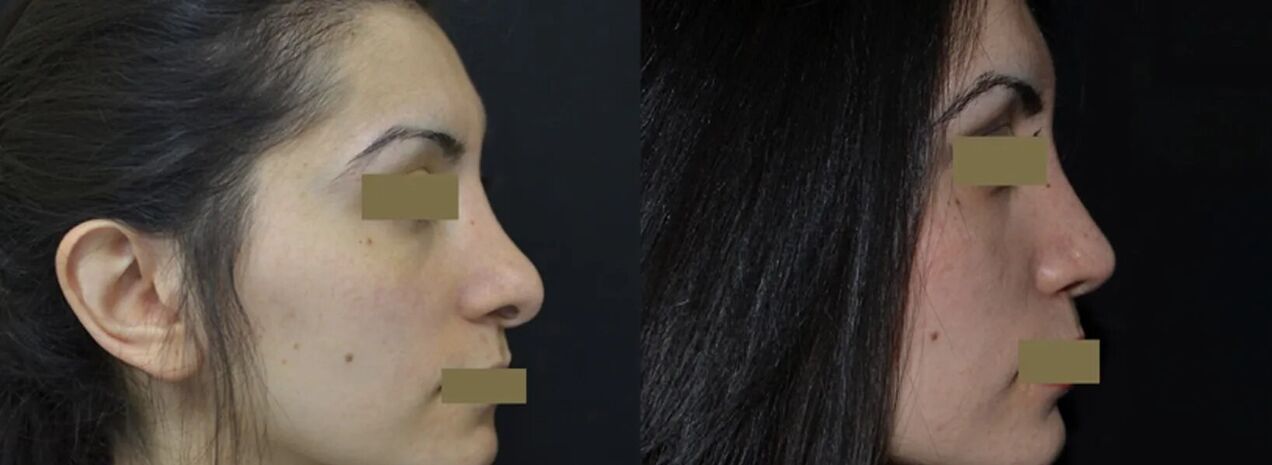
Sometimes the situation makes it possible to perform without a second operation, to use the possibility of drug therapy, such as, for example, in the case of scars that are too convex. To correct minor asymmetries, we recommend non -surgical rhinoplasty - the use of fillers, or the use of medications containing botulinum toxin to twist the tip of the nose. But more often, surgical correction is still required, for example, transplantation of cartilage tissue itself to fill a saddle -shaped depression or rotation of the tip of the nose and restoration of the shape of the nasal alae with correction of the position of the nasal septum. and cartilage of the nasal passages.
It is possible to talk about the possibility of re-rhinoplasty only after 6-8 months after the first rhinoplasty. This is due, first, to the fact that the final recovery of the tissue takes a long time, in a few months after surgery, the shape of the nose changes, and the "defects" observed by the patient immediately after plastic surgery may disappear. completely from time to time. In addition, surgery, although minimally invasive, always injures the tissues and nerve endings to a greater or lesser degree - therefore, before performing a second operation, one must wait for complete healing.
The latest techniques for rhinoplasty using micro instruments are such that the consequences of any unsuccessful operation can be eliminated. The main thing is to get help from a qualified specialist.
Causes of complications: surgeon error or patient error?
It is wrong to shift all the blame on the patient’s shoulders, but it would also be a big mistake to blame the plastic surgeon for everything. The reason for the formation of defects can be both low qualifications of the specialist and the patient's default attitude towards the accepted recommendations. In a certain percentage of cases, "crooked nose" and other complications of rhinoplasty are associated with an unfavorable regenerative process, and one should not blame anyone in such situations.
However, the mistakes of plastic surgeons can actually cause nasal deformities after rhinoplasty. Therefore, the selection of specialists and clinics should be given special priority. You can not choose a doctor at a "low price", health and beauty can only be entrusted to a master experienced in his craft. If not, you will most likely have to pay twice.
Listed below are some of the mistakes that plastic surgeons may make and the aesthetic complications of rhinoplasty that can result:
Incorrect grafting placement. Transplantation of autologous material (patient cartilage tissue) or installation of synthetic implants is used quite frequently in nasal reconstruction. If the implant is located asymmetrically, after tissue healing, the patient will notice a "crooked nose" and obvious asymmetry.
asymmetry correction. Many rhinosurgery surgeries involve interventions on the bone and cartilage elements of the nasal skeleton, including partial amputation of hard tissue. If resection on the right and left sides is performed unevenly, after rhinoplasty there is nasal curvature and asymmetry.
As already mentioned, the development of aesthetic complications after rhinoplasty is not always the result of surgeon error or the irresponsibility of the patient at the recovery stage. The following are the causes of complications that can be called the result of a set of unfavorable conditions:
transfer extrusion. Tissue grafts or implants are used in many rhinosurgical surgeries. Unfortunately, implants can move during the recovery period. The result will be the curvature of the nose or its asymmetry.
Absorption of cartilage grafts. Cartilage grafts are living tissues that are exposed to the action of body enzymes. With an unfavorable regenerative process, part of the grafting can be destroyed by enzymes. The result will be a "crooked nose" or a violation of the symmetry of the right and left sides.
Cartilage grafting distortion. Distortion is a Latin word that translates as "curvature". Cartilage is elastic and flexible. Under pressure from other anatomical formations of the nasal skeleton, as well as due to strong tissue edema, it can become deformed. This will result in a distorted nose.
Violation of the integration of bone and spinal cartilage. During surgery, the connection between the bone and the cartilage elements that make up the back of the nose is severed. If during the recovery period there is no proper integration of this structure, the deformation gradually develops.
Excessive callus growth. The process of bone regeneration includes the intermediate stages of bone callus formation, which will then be replaced by complete bone tissue. If the regenerative process is too active, excess tissue is formed in this place, which is externally indicated by bumps, "bumps" or asymmetry. There may be a deviated septum.
Hypertrophy of scar tissue in the tip area. As a result of the abnormal growth of scar tissue in the area of the tip of the nose, more precisely, directly above the tip, an excess of tissue is formed, which externally manifests itself as a coracoid defect.
It still lists some errors of the recovery period on the part of the patient, which can cause curvature and deformation of the nose:
- Wearing glasses;
- displacement or self -removal of fixative plaster;
- self -removal of rhinological splints (tampons in the nasal passages);
- accidental mechanical damage to the nose;
- sneezing with mouth closed;
- blow;
- drinking alcohol, smoking during recovery;
- restart the sport early.
Consequences of such operations
Rhinoplasty is an expensive, complicated and sometimes necessary operation. What do you need to know about the consequences?
When deciding on such an operation, one should be aware that the procedure is fraught with complications. Instead of there being inevitable natural difficulties in the field of any operation, they pass after a certain time. These include: hematoma, bruising under the eyes, difficulty breathing, impaired sense of smell, temporary asymmetry, numbness.
What could be the reason for this?
- Violation of the rules of preparation and conduct during the recovery period,
- Individual characteristics of a person.
The final results are known only after a year, sometimes a little later. No doctor can predict it with certainty.
Complications after rhinoplasty
Complications after rhinoplasty can be classified as:
- aesthetics,
- works,
- Psychology.
The last point stands quite differently, it follows from the previous two. However, sometimes it is particularly specialized, as it can proceed in a complex form, depending on the level of the main complication and the psyche of each individual. Similarly, functional complications can leave a mark at point 1 (aesthetics), since all functional disorders also have external manifestations.
Consequences of rhinoplasty
Frequency of occurrence
Complications arise throughout the operation and. They can be divided into 4 time periods:
- Directly during surgery, more often it is severe blood loss,
- Immediately after surgery
- During the recovery period
- At the end of the recovery period.
In addition to bleeding, complications include rough scarring, adhesions, bone damage, airway obstruction, bruising, and.
The expected and unavoidable complications passed in 2 weeks. Danger is an "unexpected" complication:
- infection,
- Tissue necrosis (skin, cartilage, bone),
- Stitch differences (easily removed).
Let’s look at some of the complications in more detail.
Kind of
Edema
Swelling after rhinoplasty is a natural phenomenon. It is wrong to call it a real complication. Edema appears in the operated area and under the eyes. Immediately after the operation, it became clear. Fall in about two weeks. The swelling may last longer - up to six months. The reasons for the duration and quality of edema are individual.
callus
If during the operation a violation of bone structure is required, then the formation of bone callus is inevitable. His presence is common. The complication is hypergrowth of bone tissue. Such complications require deformation of the nose, violation of harmony.
Callus formation after rhinoplasty is a natural process to protect the body from external influences. This is the process of bone regeneration. First, new connective tissue emerges, then thin bone fibers are formed, and finally, bone tissue completely replaces soft tissue. The surgeon’s job is to prevent the intensity of this process.
Nose twisted to the side
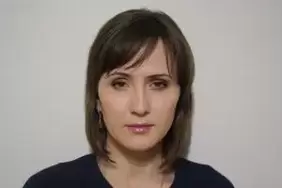
What is the purpose of the operation? If the reason is the elimination of the curvature of the nose, then the result immediately after the operation can be pleasant, the curvature disappears. However, by the end of the recovery period, it may return, as the nasal tissue has no "memory". In this case, a correction is required.
But swelling can also be a cause of curvature. In this case, it is a natural complication that will be futile at some point. Here again individual characteristics play a role. For one, the duration will be 2 weeks, for another - a month, two, three.
In any case, such curvature would be the norm. You can talk about no earlier than a year, if the problem persists.
The nose is not breathing
Violation of nasal breathing after rhinoplasty can be caused by blockage of the nasal passages. This usually happens during the recovery period. The cause of the complication is allergic or reciprocal rhinitis. This requires medical treatment. Surgery is only necessary if treatment fails.
With delayed complications (which occur after a long time), there may be narrowing of the nasal passages, which also leads to nasal breathing difficulties. This causes discomfort. In this case, reconstructive surgical intervention is required, as the cause of the complication is an increase in the amount of tissue in the inside of the nostril. It needs to be cut.
Nose sagging
This complication is called "hollow". The reason is a deformity due to a fracture of the skull at the time of osteotomy, when it is not possible to centralize the fragments. The reason may be excessive tightness in the nose. Corrected only with repeated osteotomy.
Smelly
Unpleasant odor in the nose after rhinoplasty is a natural phenomenon. It is not a complication and is acceptable throughout the first year after surgery.
Temperature
After rhinoplasty, the body temperature rises, that is normal. It does not last more than 3 days. In other cases (higher temperature, prolonged time), you should see your doctor.
Other complications
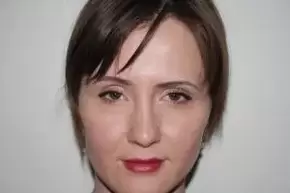
After surgery, the sense of smell is disturbed, which is quite natural. Gradually it will return to normal. have a red or pink color. Not only that, they tend to grow.
To eliminate it, all the requirements of the surgeon, which are required during the recovery period, must be met:
- Suture treatment with medications prescribed by a doctor,
- Keloid scars require corticosteroids
- In some cases, corrective surgery may be prescribed.
Rhinoplasty is a serious operation, although quite common. What matters is not only the experience of the specialist, but also your attitude towards the procedure. Negligence is unacceptable. You must fully trust the surgeon, meeting all the necessary requirements. Of course, the qualifications of the specialist cannot be doubted.
It’s no secret that facial imperfections create a prejudicial public perception that is important to people’s self -esteem. Often loss of attractiveness leads to a state of depression. That is, it is logical that facial deformities that reduce symmetry reduce patients ’quality of life and self -esteem.
The cause of curvature
Crooked nose is a general term used to define a defect associated with the deviation of the nasal pyramid relative to the mid -sagittal axis of the face that passes through the center and divides the face into equal parts.
The patient’s history included traumatic injuries and congenital nasal deformities. Of all the facial bones, the nasal bone is the most fractured, and these fractures often result in aesthetic changes and nasal distortions. As a rule, the curvature of the nasal septum occurs due to its distortion, different variations of the curvature of the septum make it possible to align it.
Deviated noses can also be caused by asymmetrical growth of nasal structures or rhinoplasty. The nose with a recessed feature may appear crooked, although its structure does not actually deviate from the median axis. Occasionally defects of the nasal septum occur during childbirth.
How is the alignment done?
Today, rhinoplasty is one of the major cosmetic surgeries performed by plastic surgeons. The main indications for rhinoplasty are functional and cosmetic disorders. Rhinoplasty is a complex and complicated operation in terms of function and aesthetics. Therefore, unfortunately, the level of revision rhinoplasty is quite high.
The bent nose, the result of complex deformation of structural elements, which includes:
- nasal septum;
- prone upper and lower sides;
- nasal pyramid bones.
Which leads to functional and cosmetic disorders. The main cause of curvature is considered to be excessive deviation of the nasal septum.
The curvature of the septum
Deformation is divided into two main categories. They include:
- cartilage deviation (lower 2/3);
- bone deviation (upper 1/3 of the nose).
Bone deviations in the upper 1/3 are usually corrected with a controlled nasal fracture or osteotomy and displacement to the midline. The goal of osteotomy is to create a mobile bone segment that can be returned to good anatomical orientation and position. The risk of bone displacement in the original curved position is low.
Nasal cartilage deviations are most often among the most complex defects that are difficult to correct. Many of the lower 1/3 deviations involve displacement of the main nasal septum. To correct it, the base is flattened, including correction of the nasal bone and nasal septum. With significant curvature of the cartilage, additional transplantation of cartilage material may be required.
Rhinoplasty correction
One of the most difficult tasks of rhinoplasty is to correct a crooked nose. Curvature may remain after the first rhinoplasty, or even after the second surgery.
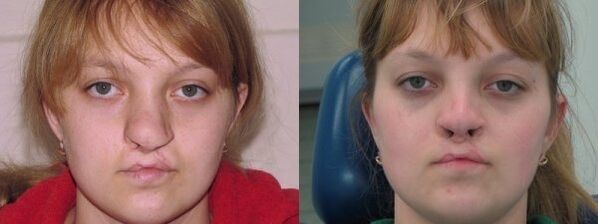
The process after rhinoplasty can be quite unpredictable. As a general rule, a review of rhinoplasty to correct postoperative defects may be required in about 3-6% of cases, but in the case of nasal defects, this figure may be higher.
A number of nuances complicate the correction of the curvature of the nasal structure:
- The main factor is that the curvature of bone and cartilage tissue has a certain level of memory. Cartilage always tends to return to its original position. Natural tension exists in the soft tissues and cartilage structures, further affecting the nose after rhinoplasty, making it difficult to achieve good results after surgery. Therefore, the nasal structure tends to drift towards its original position.
- Another factor that can lead to the return of the nose to its original curved shape is incomplete correction of the deviated septum. In addition, with a congenital deviated nose, septal deviation can pass in a state of facial asymmetry. This means it is difficult to find the true mid-sagittal plane to try to place a new nose position in it.
Why is the nose crooked after rhinoplasty?
We must not forget that getting a completely straight nose is a challenge. After a significant increase, it may have slight asymmetry or residual deviation. Slight curvature is considered acceptable. The most difficult task is to make the front view symmetrical, as incident lighting raises shadows and the nose can appear asymmetrical.
There are many reasons why the nasal septum may be bent after rhinoplasty. This is most likely due to asymmetric edema drift and/or soft tissue of the nasal bone. Healing after rhinoplasty is a dynamic process.
For the first time a few weeks after surgery, the swelling of the structure may be asymmetric. This will probably create the illusion that the septum is curved.
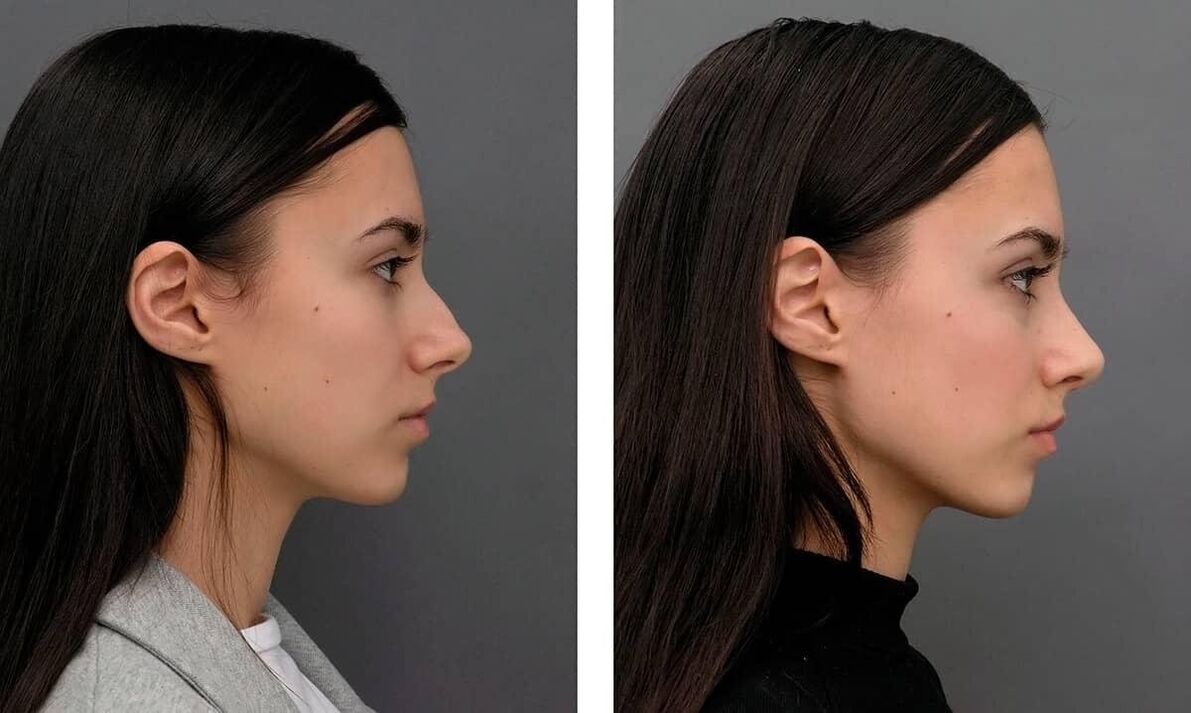
The intensity of swelling after surgery may also vary in different parts of the nasal structure. Much of the swelling after rhinoplasty disappears within a month. It takes longer to resolve the last 25% of swelling, over a year or so after rhinoplasty. The final effect of the operation may take 20-36 months.
Swelling after rhinoplasty is highly dependent on the nature of the nasal structure being operated, the surgical approach, postoperative care and skin thickness. After open rhinoplasty, if an external incision is made near the base of the nose, the swelling will be longer and larger than closed rhinoplasty. People with thick skin will be more swollen.
Swelling occurs under the influence of gravity, which means that the upper back becomes the first. In general, the nose has a certain degree of swelling throughout the year.
When the septum is adjusted and held well, the nose initially appears straighter, and then, most often, deviates after a certain time. Initially, the swelling will hide the irregularities, which may become more noticeable over time.
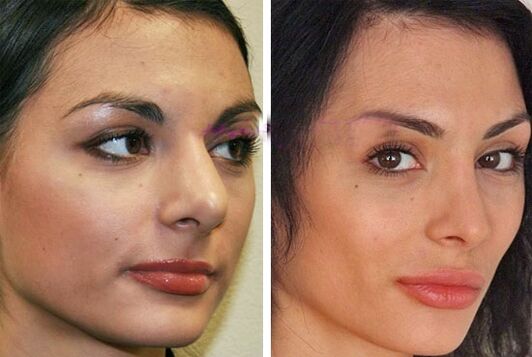
Revision rhinoplasty aims to correct defects not considered at the first operation, for example, a deviated septum that makes a distorted appearance, or as a result of incorrect rhinoplasty or poor healing.
Rhinoplasty necessarily involves two different procedures, on the left and right side of the nasal septum. Asymmetry can occur due to uneven lateral correction, varying scar intensity during healing. Curvature may appear as a result of excessive cartilage removal on one side. Deviated septum can be corrected. Revised rhinoplasty may involve cartilage transplantation.
The full results of rhinoplasty can be observed after a year of observation. If the curvature of the nose persists after surgery, it is necessary to wait 5-10 months before proceeding with revision rhinoplasty. Very early surgery can lead to new problems.




















